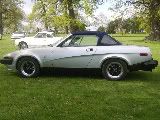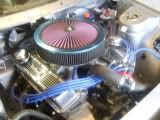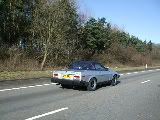My 1970 TR6 had the type of system you describe. It also had no apparent way for fresh air to purge the crankcase. The rocker cover had a largish (3/8" maybe larger) ID hose "Y" 'ing off to each Stromberg carb down stream of the throttle plates. On the carbs' nipple connections were plastic restrictors with a much smaller hole in them, maybe 4mm or so. I'm guessing your 7 is exactly like this including the utilization of a charcoal canister that also "T'd into it. The drilling size in those two plastic reducers is important to the correct scavenging of the crankcase because it determines the amount of suction needed in the crankcase, and along with suitably calibrated metering needles, correct carburetion.
However, all this is really dependent on an engine that is right up to snuff with not too much extra age wear/age related blow-by. Too much blow-by can increase pressure in the crankcase because the plastic carb reducers are now not capable of scavenging all the increased blow-by from the crank case so leaks may develop.
Here is some good info on PCV. I used it to plumb an American style PVC system into my TR8 when I converted it from FI with an above similar crank case vent system to a Holley carburetor.
http://www.britishv8.org/Articles/Posit ... on-PCV.htm






